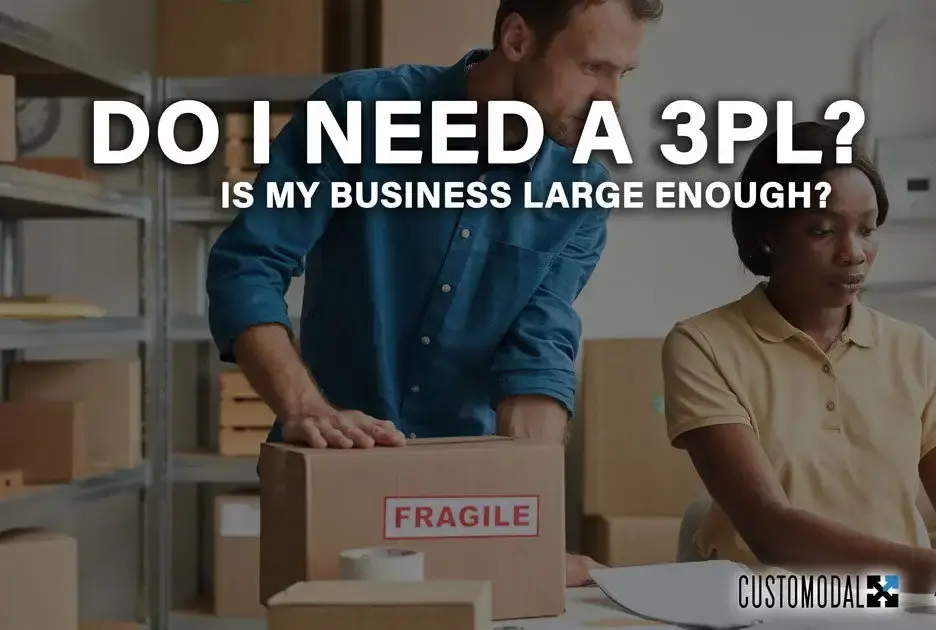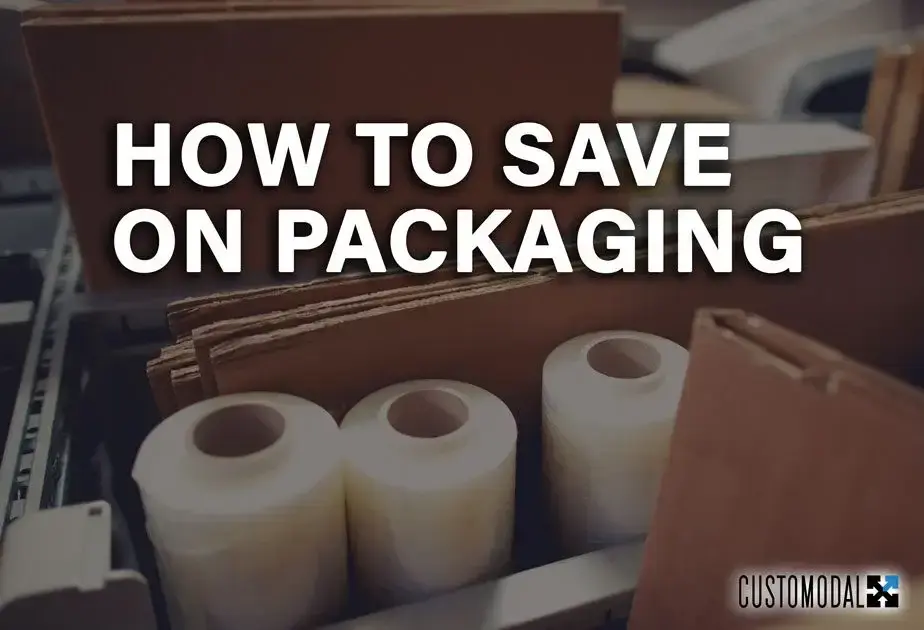
In a world where online commerce has exploded, and customers want their stuff mere hours after placing an order, there has never been greater scrutiny by management of how to save on freight costs. Whether you are in charge of shipping to warehouses, distributors, retail stores, or residences you can really differentiate yourself and your company by executing shipping strategies that save on freight costs.
How do you save on freight costs? While there are innumerable ways to find savings on freight costs, you must start with understanding how freight costs are calculated and then making tradeoffs that affect the cost drivers.
Before You Can Save on Freight, You Have to Know How Cost Is Calculated
There are a number of factors that could influence the cost of freight, but they can mostly be simplified to three components: Size, Distance, and Commodity.
Size Component
More often than not, the size component will be measured in weight. Simply put, the heavier a shipment, the more expensive it will be to ship overall; although the cost per lb may decrease.. Heavier shipments require more fuel to be transported, so this additional fuel expense will be covered in shipping costs. This is also why airlines typically charge an additional fee for baggage over 50 pounds.
The benefit of charging a per pound or per kilogram cost when shipping freight is that it allows for consistency across products. If you are a farmer and looking to get your product on a truck, you know that 10 pounds of onions will carry the same cost as shipping 10 pounds of cabbage and not have to worry about finding a different rate for each product you intend to ship. While 10 lbs of onions and 10 lbs of cabbage have similar shipping characteristics…10 lbs of fluorescent light tubes is a whole different matter. More on this further on.
While shipping by weight is the standard in the freight industry, there are some scenarios in which volume will come into play. If you have a load that takes up a lot of space but does not weigh much, you may be charged a higher rate because you are inhibiting a carrier’s ability to transport other products.
To combat this, the U.S. domestic trucking market is seeing experimentation with decking trailers to create more room and containerizing truck freight. LTL carriers are moving toward a density factor similar to air and ocean shipping. It is common when shipping sea freight that many liners have standardized containers with which they load their vessels. This allows them to maximize their space without having awkward or oversized items lower their volume capacity. In order to ship in this scenario, your product(s) must fit into the containers used by the vessel you intend to use.
When calculating your final shipping cost, you will likely be looking at some minimum fixed cost with a per pound/per kilogram/per item charge added on once this minimum has been met.
Distance Component
The second standard factor in shipping costs is distance. All other things being equal, two shipments moving different distances will have different freight costs.
Within the United States, longer distances require more fuel to be burned, which will be reflected in the higher freight costs. In addition, drivers will be on the road for a longer period and need to be paid more, further contributing to the higher cost.
When shipping internationally, these same factors come into play, but there are also other considerations, such as customs checks and transferring products from sea to land vessels that will add to the bottom line of the freight cost.
Just like many companies utilize standardized containers to maximize the volume capacity of their shipments, major freight companies try to minimize the distance cost of freight by having centralized warehouses, distribution centers, and hub/spoke distribution networks. This is why it is less common to see distribution centers for national brands on the coasts than it is to find them in the Midwest.
Commodity Component
The last standard factor in shipping costs represents the commodity. As mentioned earlier, a shipment of onions is vastly different from a shipment of fluorescent light tubes. Each commodity has different characteristics related to packaging, loading, fragility,and likelihood of theft. And shipping companies understand how commodity differences affect their cost to provide transportation services. Each of these pieces come together so that all other things being equal; our shipment of onions has a different cost than our shipment of fluorescent light tubes.
Freight Cost Calculator
The vast majority of freight companies in 2020 will have some kind of freight cost calculator on their website. This calculator will use algorithms to find the intersection of the size, distance, and commodity components of your shipment to come to an estimated total cost.
Data input for these calculators is generally very straightforward and user friendly. Simply enter basic information about your shipment to receive a cost estimate. Adjust your weight, change your destination, try different commodities to see costs change.
While these freight cost calculators are extremely convenient and generally accurate, you must remember that they are simply an estimate. There are many additional factors or special services that can further influence your final freight cost.
What Are Special Factors that Can Influence Freight Cost?
While the nuts and bolts of freight costs involve moving a specified quantity of a given commodity over a specified distance, there are some special considerations that may drive your freight costs up and need to be factored into the bottom line before making a shipment.
Insurance
Just as in everyday life, accidents happen in the freight industry. As such, insurance is necessary to protect against the loss of cargo.
If you are placing a one-time order or send freight rather infrequently, there are options available to insure your specific shipment, sort of like how the United States Postal Service offers delivery insurance when sending packages during the holiday season.
Much like regular auto or health insurance, these all-risk policies will have premiums and deductibles that seem expensive upfront, but with the cost spread out over a high load value, the cost is actually very reasonable for the risk.
Time
If you have something that needs to be delivered in a hurry, then it is going to cost you more. For those online shoppers out there, you are familiar with options such as “standard delivery” or “express delivery,” where products delivered in 1-2 business days cost more than those delivered in 3-5 business days. Well, the manufacturing and business world operates the same. Urgent means more expensive.
Having freight expedited creates inefficiencies in the system that will end up costing more for delivery. The product may have to use a different method of travel than what is normally expected, come with special handling instructions, or go out of its way to make a transfer, putting miles on the delivery route that it would not normally take.
Specific Vessels Required
There are some items that require a specific type of vessel for transportation and may require a higher cost than normal products. A few examples include:
- Cattle trucks
- Fuel tankers
- Refrigerated or frozen product transport
These are just a few of the specialized examples of products that may come with a higher freight cost, as companies and/or carriers have to invest in specific vehicles for this type of cargo that do not really serve purposes other than hauling what they are intended to haul.
Valuable Products
While valuable products will certainly come with higher insurance costs, the general shipping rate may be higher as well, as these types of products require much more care and work during the shipping process. Some examples include:
- Fragile items that require specialized handling, maybe even by an expert, and frequent checks by the carrier to ensure that they are riding safely in the appropriate position
- Jewelry and other expensive freight that needs heightened security due to a greater likelihood of robbery
- Vehicle and heavy machinery carriers that require drivers to have special licenses to haul
In addition to this, there are some products that will require special packaging and/or increased padding prior to shipment, further driving up the cost.
On-Arrival Considerations
With some products, it is not as simple as loading onto the liner, hauling it, and then dropping it off.
Some products require that the driver or other certified agent help with the moving and or set-up of the product once it has reached its destination. For example, if a furniture company has a request for its furniture to be assembled upon delivery, then this can lead to higher freight costs.
Eleven Expert Strategies for Lowering Freight Costs
Now that you understand the nuts and bolts of how freight costs are calculated let’s dive into some ways that you can effectively cut costs and get the most bang for your buck when shipping cargo.
Number One: Maximize Your Loads
Maximizing cargo loads is the single most important strategy for lowering freight costs and will either directly or indirectly affect most other strategies on this list. Think about retail in your day-to-day life as a way to understand load maximums.
There is a reason that stores such as Costco and Sam’s Club have become popular among people looking to stretch a dollar: Buying in bulk is the way to go if you want to get the lowest price per unit.
The freight industry is no different. The more boxes or products you can load into a vessel, the less you will end up paying per unit.

To help illustrate this point, let’s consider the cost of ocean freight. Two common sizes for shipping containers on ocean liners are 20 foot and 40-foot boxes. While the 40-foot box is twice as big, the cost is not twice as much. In fact, the cost of shipping for a 40-foot container is only marginally more expensive than that for a 20-foot container.
As such, if you have the opportunity to fill a 40-foot box on an ocean liner, it is in your best interest to do so, as you will be able to charge the same price per unit for your product once it reaches its destination, but you will receive a greater profit margin by capitalizing on the lower shipping cost per unit.
Although the benefits of shipping maximum loads are not as easily illustratable for air or ground freight as they are for ocean freight, the same concept still applies. Carriers want to reach capacity before sending their truck or vessel, so if you are willing to pay for more space to get them closer to this end, you will see a discount in your per-unit price.
Number Two: Choose the Right Transportation Method
Some products are required to be shipped via a certain medium, with customers perhaps even paying a premium to ensure delivery by said medium.
However, if a special shipping method has not been requested and there are no urgent time restrictions in getting the product transported, then looking into the most economical transportation method, or combination of transportation methods, could save you a heap of money.
Going back to the previous strategy of maximizing loads, ocean and rail transportation are typically the two transportation methods that allow for the highest quantity of product to be transported. As such, if you are in the business of shipping bulk products, you will definitely want to explore your ocean and rail options and see how close they can get you.
While air transportation is usually the most expensive due to its role in moving products long distances in short periods of time, it can actually help you save money when shipping internationally because it can require fewer stops, which can significantly lower handling costs.
Therefore, it is vital that you know your product, industry, and timeframe to thoroughly do your research to discover the best methods and combinations of methods to economically ship your goods.
Number Three: Understand FCL and LCL
This is another important strategy for lowering your freight costs and is once again tied to the idea of load maximums.
When possible, you want to ship using FCL, or full container load. For example, if you purchase a 20-foot box on an ocean liner, you will want to fill it with product in order to ship it FCL.
If, for some reason, you are not able to fill your container, you can purchase LCL shipping or less than a container load. While this will be cheaper, in terms of the total cost, than purchasing FCL for a container you will not be able to fill, the unit cost will go up because the liner will need to find someone else to purchase LCL to fill the remainder of the container, which is not as easy.
Therefore, when possible, try to purchase FCL and work with your freight broker or logistics provider to try and find a way to fill your container. Whether you will be able to fill your container by combining purchases from multiple suppliers or need to have some product shipped via alternate methods to fill your container for the bulk of the travel, operate at FCL when possible.
Number Four: Be on Top of Your Schedule
One of the most significant mistakes you can make in the freight industry is trying to ship everything in a hurry. This is especially true for young companies who are eager to make a strong impression by getting products to a destination as soon as possible.
While time is definitely money and faster can be better if the costs are equitable, always be aware of when you have items that do not require an urgent shipment. The slower items move through the freight system, the lower the cost will typically be, so you will waste money by trying to hurry all shipments through the freight process.
There are a number of reasons why it is better to wait to ship products, some of which include:
-
- Consolidation becomes easier – as mentioned, load maximization is arguably the most important factor in keeping your freight costs low. By giving yourself the flexibility to wait, you are more likely to avoid situations in which you are forced to ship LCL, as new orders may come in that allow you to fill your space
- Flexibility of shipment methods – when your shipment becomes urgent, you pretty much pigeonhole yourself into having to ship by air. Not only does air tend to be expensive, but few options mean less competition to drive prices down. If you have the ability to wait, you can choose the shipment method that comes with the lowest cost
- Lower handling costs – hurrying your shipment through the freight process means that more resources will be required to track it and make sure it is on schedule at all transfer points. A more passive movement along the route to its final destination will significantly lower handling costs
- Carriers become desperate – by using patience, you are likely to find yourself in a favorable situation in which a vessel is getting ready to take off LCL. Similar to the old days of flying standby, you may run into a scenario in which your shipping costs can get greatly discounted as carriers adopt a “something is better than nothing” attitude
In general, it is better to wait when shipping. Sure, you cannot have perishable goods sitting around waiting for the cheapest opportunity, and there will be some situations in which priority delivery is a must, but exercising patience is a solid manner to maximize the bang for your buck when shipping.
Number Five: Know Your Niche
As the old saying goes: “A jack of all trades is a master of none.”
This is a useful adage in the freight industry. By having a very specific focus in terms of what you are trying to ship, you can save on freight costs in the following manners:
- Understanding of supply chains – when you become immersed in shipping for a certain industry, you will have a better feel for when your customers will need products. This will help you avoid bare-shelf scenarios that will lead to spikes in shipping costs due to rushed deliveries and having to potentially settle for LCL options
- Relationships become strong – many would argue that relationships make the world go ‘round, both on a personal and professional level. When you become a known commodity in a specific niche of the freight industry, you can get the inside scoop on when low-cost opportunities arise
- Lower investment required – a narrow focus means that you will have fewer investments that will potentially sit unused. For example, if you try to ship both automobiles AND frozen desserts, you run the risk of your refrigerated truck sitting empty half the time, and vice versa. You are better off focused on focusing on filling one of your trucks, full-time
Number Six: Reuse Materials When Possible
Packaging can become a very expensive part of the freight process. As such, not only can reusing materials be environmentally friendly, but it can save you some money, as well. Some things that you might want to consider as they pertain to the reuse of materials:
- Can the boxes or crates be used for another shipment? Are there delivery points where the product can be removed from the packaging and left with the buyer, allowing you to use the containers for future hauls?
- If the materials are not fit to carry future loads, can they be used as padding or protection for the transport of more delicate items?
Number Seven: Give Meticulous Inspection
Thoroughly check your invoices and make sure that everything you paid for is included with the final shipment.
In addition, do not just simply sign off when you receive a delivery. Check your products and make sure that they are all in good condition and meet the expectations you had when placing your order. If there are any items or defects, bring it to everyone’s attention and try to get a refund.
Inspection becomes of even greater importance when special insurance or specific handling instructions are purchased at the time of shipment.
Number Eight: Choose Light Packing Materials
As mentioned earlier in the article, weight is one of the fundamental components in determining freight costs. While the weight of the product being shipped is largely non-negotiable, there is no need to incur higher shipping costs due to heavy packing materials.
While the weight of cardboard boxes and padding materials may not seem significant when considered individually, they can add up over large quantities, so be sure to only use what is required for safe transport.
Number Nine: Avoid the Holidays
If you are in an industry where it can be avoided, try not to ship anything during the holiday season, as costs will be disproportionately high.
Try to order in larger than normal quantities ahead of time and try to make those orders last throughout the entire season. If space becomes an issue, compare the costs of additional storage versus that of the higher rates charged to ship during the holidays.
Number Ten: Cut Out Delivery Appointments
Just as it is important to know your schedule and not try to needlessly rush shipments through the freight process, you can save a lot of money on freight costs by cutting out on delivery appointments.
Yes, there are some items, typically those valuable products that require a high degree of oversight, that need an appointment and signature to verify delivery. The peace of mind alone could be worth the additional cost.
However, for all routine deliveries, make sure the window is large for product drop-off and that the goods are not required to be delivered at any specific time. Delivery appointments will come with a higher degree of administrative costs, so, once again, making the freight process a little more passive is a great way to save some dollars.
Number Eleven: Understand How High Value Can Save You Cost
Sometimes, you need to spend money to save money.
If you are in an industry where freight is an important part of your operations but not necessarily your area of expertise, or if you are simply new into the world of freight and are trying to figure out shipping on the go, it may be beneficial for you to invest in the services of a freight broker or purchase some of the latest freight scheduling software.
While these items may have expensive up-front costs, they can actually save you money in the long run because they can help you find the most efficient means of maximizing your loads, identifying the cheapest transportation methods, and operating at FCL.



